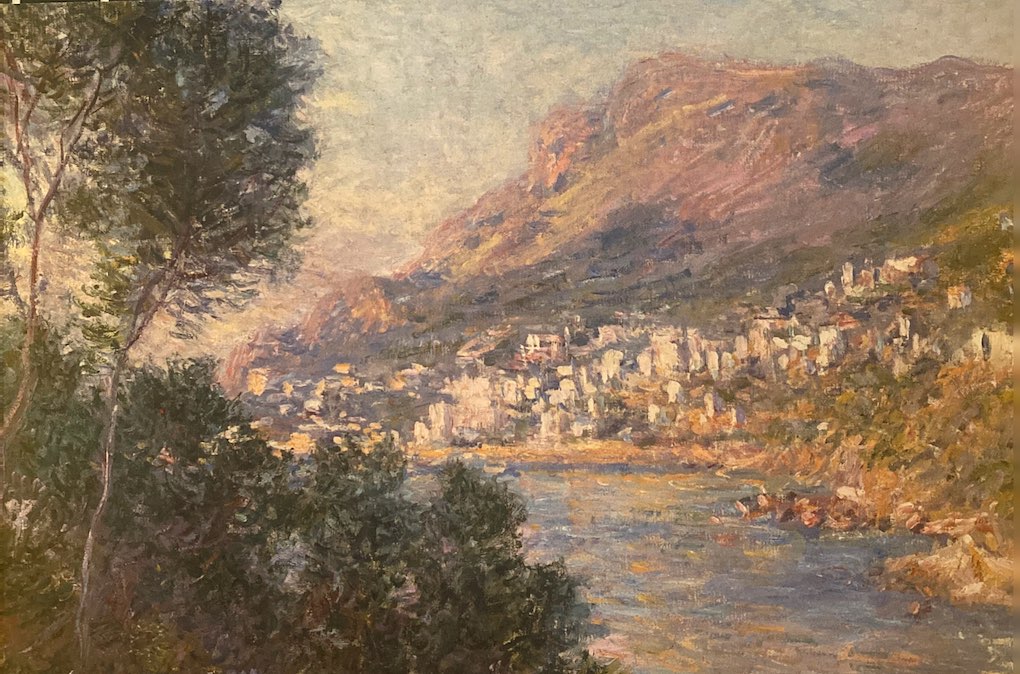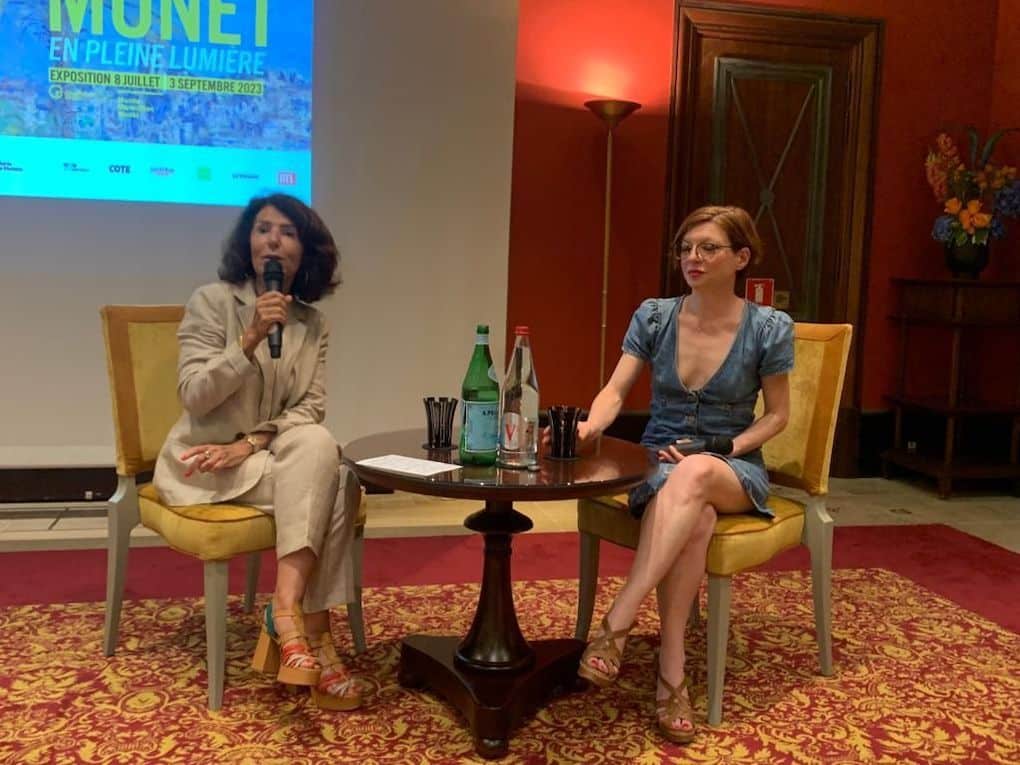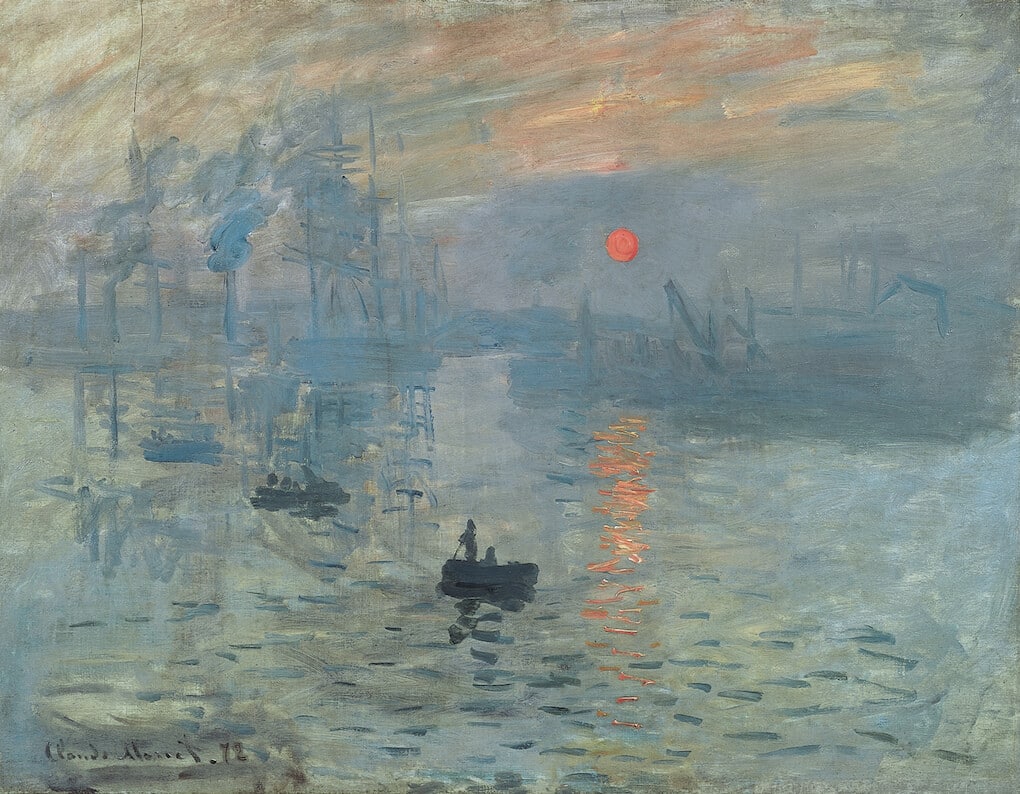Monet and the Côte d’Azur: A story of love and light

Marianne Mathieu, curator of the exhibition about the painter and the Principality, was the guest at the Rendez-Vous Culturels (Cultural Conferences) at the Hôtel Métropole.
From 8 July to 3 September, the Grimaldi Forum will be hosting a truly exceptional exhibition: “Monet en Pleine Lumière.” (Monet in Full Light)
An exhibition that is dedicated to the Impressionist painter, designed by Marianne Mathieu, a Monaco-born art historian who is deeply passionate about Impressionism, and Monet in particular.
Having fallen in love “by chance” with the painter, born in 1840, the exhibition’s curator was invited by the Hôtel Métropole Monte-Carlo to give a foretaste of what the public will see in July, and to describe the ties between the artist and the French Riviera and Monaco.
Monet came to the Riviera for the first time 140 years ago.
“This was an opportunity: the anniversary of Monet’s first stay in Monaco,” says Marianne Mathieu. Claude Monet discovered the Riviera in 1883. The painter, who was still little known at a time when Impressionism was frowned on, could not make a living from his paintings. “He needed to earn money and become recognised. So he had to find a new way of promoting his work, at a time when the art market was just starting out,” says Marianne Mathieu.

Monet discovers the colours of the Riviera
Being accustomed to the cold colours of northern France, he discovered an absolutely spectacular light on the Riviera. “When Monet arrived in Monaco, he was with Renoir. He set up his easel next to the Vigie and made two paintings. Monet later wrote to his dealer: “I’m going back, and I want to go back just to paint my impressions.” We can therefore consider that what Monet painted after the trip to Monte Carlo is work that is his alone,” she says.
He soon returned to the Côte d’Azur, after a short stay in Giverny, Normandy, and even decided to stay in Bordighera, Italy, where he spent three months and produced a profusion of paintings. “He painted the equivalent of a year’s work in three months,” says Marianne Mathieu. “When he was in Bordighera, he wanted to paint the Tête de Chien and the “exotic nature”. Palm trees became his nightmare, because palm trees move. Monet didn’t draw, however, so he needed a line that didn’t move. He was looking for natural lines, but ones that didn’t move.”
This turbulent “exotic” nature did not put Monet off from returning in 1888, but this time to Antibes, where he painted around thirty canvases. “Monet is authentic in his paintings, they are a faithful representation of the Riviera,” says the exhibition curator. “In the exhibition, you can see this explosion of colour when he arrived in the South. Monet was a northern painter, used to mists and muted colours. At first, he painted watery, misty atmospheres… And when he got to the Riviera, there’s nothing like it. He said himself that he would have needed a palette of diamonds and precious stones. The exhibition clearly shows this evolution in Monet’s work, which stays faithful to what he saw.”

His work is so faithful to his vision of the world that the painter never committed his moods or emotions to canvas. “He never said anything about his feelings or doubts, even though they were legion. He had constant doubts and was deeply dissatisfied,” said Marianne Mathieu.
It is an exhibition that is particularly rich in colour, stories and surprises, with around a hundred works from all over the world. “The story we’re telling at the Grimaldi Forum is Monet’s pictorial adventure,” concludes the art historian.
You can visit “Monet en Pleine Lumière” from 8 July at the Grimaldi Forum, every day from 10am to 8pm.









